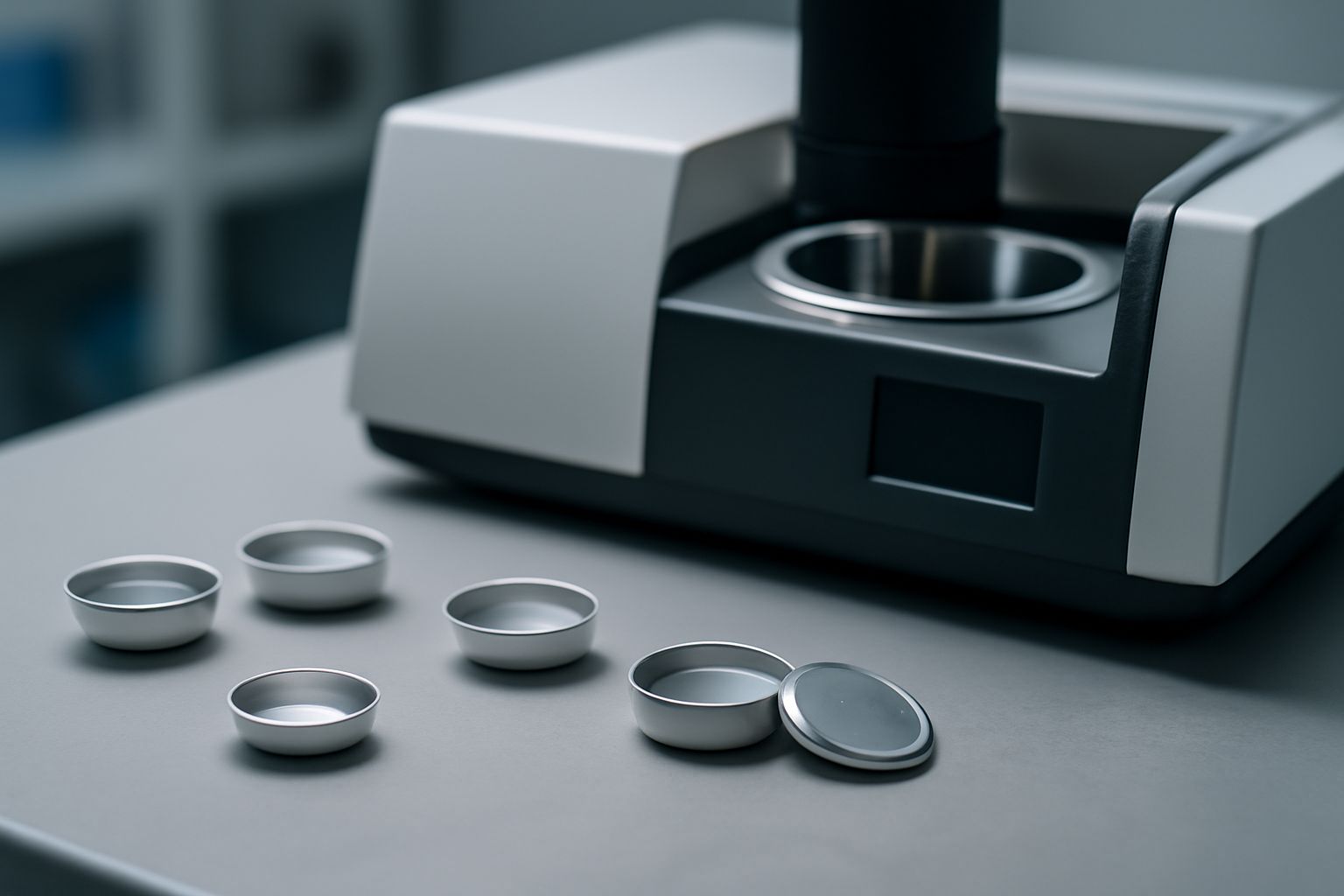Your cart is empty.
shop now
Your cart is empty.
shop now
Materials scientists depend on accurate thermal data, but many struggle with unreliable results due to improper sample pan selection or low-quality testing pans.
DSC thermal analysis sample pans let researchers achieve precision in measuring heat flow, phase transitions, and thermal properties, significantly improving materials science research and development outcomes.

I have learned that high-quality, compatible DSC sample pans can make or break the reliability of scientific results. Let’s take a detailed look at the impact of these critical consumables in modern materials science.
When a lab lacks a reliable way to measure material thermal properties, new product development can stall or fail entirely.
DSC (Differential Scanning Calorimetry) is an analytical method that measures how much heat a material absorbs or gives off as it heats or cools. It is essential for studying polymers, drugs, and advanced materials.
In practice, I have used DSC to find the glass transition temperature of polymers, spot melting points, and even detect subtle crystallization in alloys. Accurate, reproducible heat flow data lets me better understand performance and durability, making DSC essential for developing next-generation materials.
| Property Studied | DSC Application | Benefit for Research | Reference |
|---|---|---|---|
| Glass transition | Polymer design | Controls flexibility | DSC |
| Melting point | Material ID | Confirms phase stability | Lab SOP |
| Crystallization | Alloys & pharmaceuticals | Quality & purity check | Phase Transition |
DSC quickly provides the quantitative data that is the foundation for innovation in many industries.
Polymers and rubbers show small but important thermal changes. If the sample pan is not well matched, heat transfer can be unreliable and results misleading.
DSC sample pans ensure a contaminant-free, uniform contact zone so that heat flow in polymers and rubber is measured accurately during thermal analysis.
I work with many polymers that display subtle thermal transitions or degradation at certain temperatures. The right pan protects the sample from contact with metal ions or moisture, keeping test data pure. Pans also prevent sample loss and make sure the baseline is steady.
| Pan Type | Tested Material | Temperature Range (°C) | Key Feature | Reference |
|---|---|---|---|---|
| Aluminum | LDPE, PET, polycarbonate | -50 to 650 | Thermal conductivity | Polymer |
| Hermetic | Rubber blends, elastomers | -80 to 300 | Seals volatiles | Elastomer |
| Gold-plated | Specialty, moisture-sensitive plastics | -30 to 350 | No metal reaction | Product datasheet |
Maintaining pan cleanliness and proper loading is vital for accurate polymer and rubber data with each DSC run.
Selecting the wrong pan can cause errors in enthalpy data or result in physical damage to the DSC instrument’s sensor.
To choose the right DSC sample pan, match the material to sample chemistry, volume to sample size, and thermal limits to experiment requirements for your specific testing application.
I always check chemical compatibility and temperature before I order new pans. Volatile samples may require hermetic or sealed pans; aggressive chemicals demand gold- or PTFE-lined options. Instrument compatibility is also key, so I verify sizing and fitting with the manufacturer.
| Selection Criteria | Common Option | When to Choose | Documentation |
|---|---|---|---|
| Chemical compatibility | Aluminum, Gold-plated | Inert, non-reactive sample | DSC Reference |
| Thermal rating | Aluminum (to 650°C) | Standard DSC studies | Instrument manual |
| Packing and fit | Hermetic, custom | Volatile, toxic, or valuable samples | Pan supplier website |
Buying a selection of pan types matched to research needs improves reproducibility and protects expensive DSC instruments.
Many advanced material studies demand sub-milligram accuracy and consistent repeatability. With poor pans, errors in heat flow can mask true properties.
DSC sample pans made to high purity, with precise dimensions and thermal stability, are critical for delivering reliable and high-precision thermal measurement in materials sciences.
My work measuring glass transition and crystalline melting proves that impurities in sample pans disturb calibration and skew results. Only carefully produced pans, with tested surface finish and thickness, allow researchers to detect low-level transitions and minor heat effects.
| Pan Feature | Importance | What It Controls | Key Standard |
|---|---|---|---|
| Material purity | No chemical interference | Signal baseline flatness | ISO 11357 |
| Dimensional accuracy | Repeatable heat transfer | Consistency between tests | ASTM E967 |
| Thermal stability | No melting/deformation | Temperature calibration | ISO 11358 |
In critical research labs, strict quality control of DSC pans forms the basis for every trusted results report and scientific advance.
High-quality DSC sample pans are the foundation for accuracy, repeatability, and innovation in modern materials science research and demanding laboratory environments.
Contact REDTHERMO Technical SupportTechnical support email: